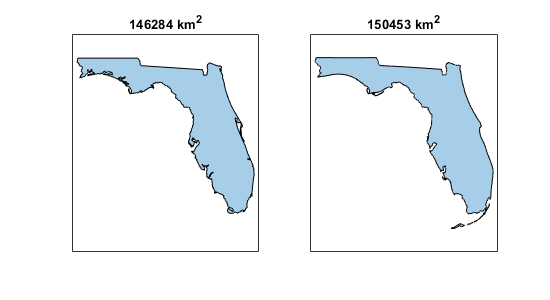area
Syntax
Description
Examples
Input Arguments
Output Arguments
Limitations
The area function does not support some large polygons that cover
more than a hemisphere.
Tips
The accuracy of the area function depends on the
resolution of the data used to create the polygons. As a result, the function can return
different results when you use polygon shapes from different data sets as inputs. This image
compares the areas of polygon shapes for the state of Florida from two data sets.

Version History
Introduced in R2024a